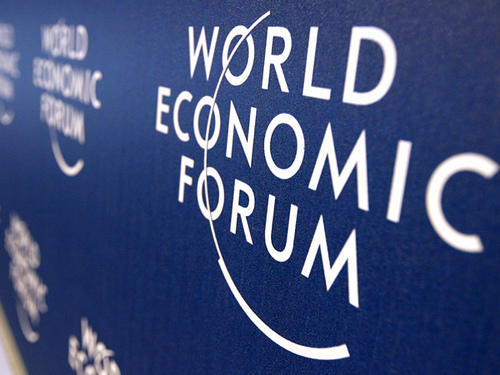Want Economic Prosperity? Close the Gender Gap
 Today, The World Economic Forum released its 2013 Global Gender Gap Report. This report confirms the correlation between gender equality and the level of competitiveness, GDP per capita and human development across the world. The report surveyed 136 countries.
Today, The World Economic Forum released its 2013 Global Gender Gap Report. This report confirms the correlation between gender equality and the level of competitiveness, GDP per capita and human development across the world. The report surveyed 136 countries.
Here’s the problem:
While 90% of the world’s population has significantly bridged the gap in health outcomes and in educational attainment between women and men, no country has closed the economic participation gap or the political empowerment gap between women and men.
The most important determinant of a country’s competitiveness is its human talent— the skills, education and productivity of its workforce. Since women account for one-half of the potential talent base throughout the world, its not difficult to see that every nation’s competitiveness hinges on how it educates and utilizes it’s women.
Since women account for one-half of the potential talent base throughout the world, its not difficult to see that every nation’s competitiveness hinges on how it educates and utilizes it’s women.
When you look at the Global Gender Gap Index, it is important to understand that it measures gender-based gaps in access to resources and opportunities in individual countries, not the actual levels of the resources and opportunities available to men and women in those countries.
In part of its research, the World Economic Forum shows the relationship between the Global Gender Gap Index and the Human Development Index. The relationship confirmed the correlation between gender equality and the level of competitiveness, GDP per capita and human development and providing further evidence that reducing gender inequality enhances productivity and economic growth. We can therefore conclude that for a country to maximize its economic competitiveness and development, it will need to achieve gender equality by giving women the same rights, responsibilities and access to opportunity as men.
The highest ranking country on the Economic Participation and Opportunity subindex, Norway, has closed more than 84% of its gender gap, while Syria, lowest ranking country, has closed only 25% of its economic gender gap.
After reading the full report, here were some of my key takeaways:
- Alleviating the Impact of Aging Populations: Many of the 136 economies covered by the Index have rapidly aging populations. In countries where it is relatively easy for women to combine work with having children, female employment and female fertility are both higher. When countries, societies and companies have policies and practices that allow women to combine work and family they will alleviate the future problems that will inevitably come from their aging populations.
- Highly Skilled Brain Drain: In many countries, women now account for more than half of the college and university graduates and hold growing percentages of entry-level positions. Companies stand to lose significant portions of their highly educated and trained female workforce if in the later stages of their careers women are forced to choose between work and family. While many countries have removed barriers to women’s entry to the workforce, business leaders and policy makers now need to reduce biases and put in place practices and policies to increase opportunities for women to rise to positions of leadership.
- Untapped, Educated Talent Pool: There are other countries that have made the key investments in women’s education but unlike the countries referenced above, they have not adequately removed barriers to women’s participation in the workforce. This group of countries which includes Japan, United Arab Emirates and Brazil, are not fully realizing the return on their investment in women. In order for these countries to benefit from their increasingly educated talent pool they must increase the participation of women in the workforce.
The good news from the World Economic Forum’s 2013 Global Gender Gap Report is that gender gap is closing especially in the areas of health and education bringing significant benefits not just to women but to the countries that are closing those gaps and to the world at large. But, if we want global prosperity much more rapid progress in gender equality on the economic front is still needed.
Until then, we women need to be prepared, focused on what we want, make the best of and take full advantage of the opportunities at hand and continually advocate for our full participation. Gender equality is in sight and within our reach.
Learn more about Rania and The Way Women Work, or how she can be hired for speaking engagements globally.